The verdict of the Fifth Assessment Report (AR5) by the Intergovernmental Panel on Climate Change (IPCC) is clear: we are the dominant species on this planet, and our documented role in the global system gives many (but not all) confidence that the Anthropocene is well named. We need to understand the interactions, impacts, and development of systems to attempt either adaptation or mitigation with respect to our changing climate, recalling that unintended consequences must always be counted. As they say, there is no planet B, no other place where externalities can be stored for later disposal. Of course, wicked problems like climate change are nothing new. They resist resolution because they are difficult to define/multicausal (unlike the ozone hole); have incomplete or changing parameters, such that “solving” one part of problem generates new ones; and have no clear solution, just better or worse options (Rittel and Webber 1973). Wicked problems are socially complex and generally require behavioral or cultural changes of significant proportions. Examples of these, such as climate change, energy transitions, water management, and biodiversity loss, are also the hallmark of the Anthropocene: they are “socionatural” transformations that we have set in motion ourselves, and the ones I have mentioned all have strong connections with each other. Here, I focus on energy.
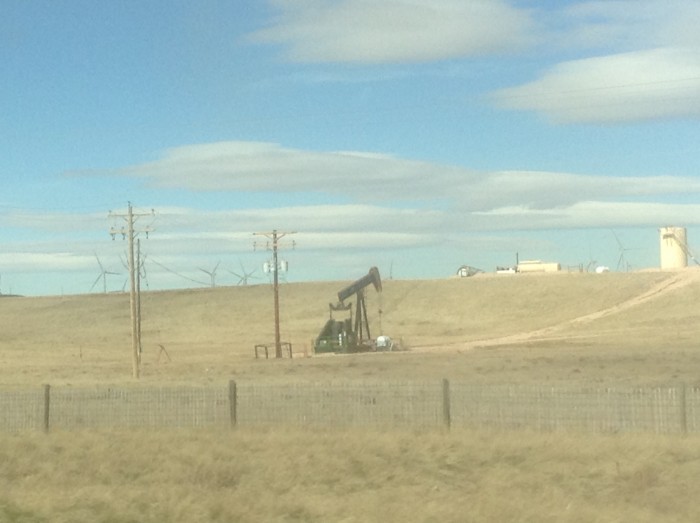
Energy and Modernities
Over the past 150 years, energy, particularly fossil-fuel based energy, has received very little theoretical scrutiny—amazingly little, really, if you stop to think about the enormity of the impact that these resources have had on global development. Tere Vadén and Antti Salminen (2013), Finnish philosophers who have recently engaged the subject of energy resources (mostly, alas, only in Finnish), direct our attention to this key aspect of the condition of modernity:
The fact that fossil energy is in a blind spot of social thought is in itself remarkable, as many of the experiential characteristics of modernity are directly connected to fossil fuels. The experience of speed and acceleration, celebrated by futurists and modernisers, fascists and communists alike, is derivative of the use of fossil fuels. Many commentators have lauded an independence from or even a victory over nature. Ironically, the impression of independence is made possible by a unique natural endowment, namely, amassed high quality hydrocarbons. This ironical twist gives modernity its characteristic epistemologically delusional nature. (Vadén and Salminen 2013: 51)
Vadén and Salminen’s universalist philosophy is of course problematic. We can insist on the singularity of a fossil fuel–driven modernity only if we reserve the notion of “modernity” for those Euro-Americans who first harnessed the power of fossil fuels and fail to recognize the many alternative modernities (cf. Gaonkar 2001) that have evolved over time and in conjunction with the various imperial, industrial, and colonial regimes that have deployed fossil fuel resources. If, instead, we consider the range of scales at which the contemporary world operates and the innovative and often subversive ways that those who are not in power manage to move their interests forward “under the radar” of national or global statistics, we might paint a different picture of what it means to be modern under the conditions of fossil fuel dominance.
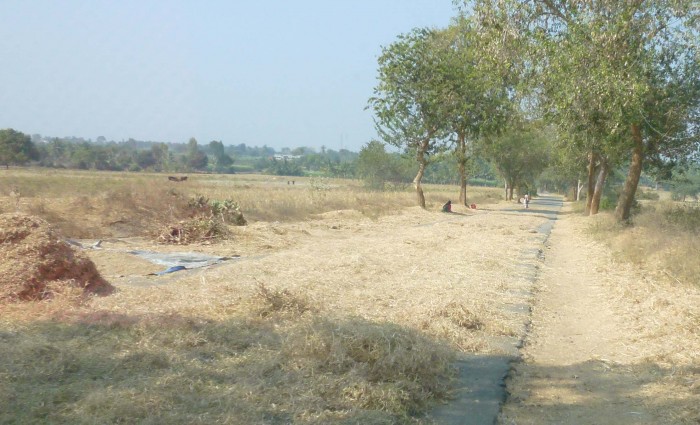
For example, when conducting fieldwork on renewable energy transitions in India in 2013, one practice that I saw frequently was the use of road traffic as a threshing machine: grain was harvested and laid out in the middle of a rural road to dry and be run over by the traffic, which could not avoid it except by going off into a ditch. The drivers thus became complicit in the sharing of energy resources to help feed the farmers, who were more than completely aware of the alternative—paying for their own fuel and machinery, or completing the task by hand. This solution was far more satisfactory (for them, at least), in many different ways!
I think that this is where renewed focus on an anthropology of energy, picking up early threads from Leslie White and Laura Nader in the twentieth century, can provide useful insights into the challenge to social sciences laid out by Vadén and Salminen. Through detailed ethnographic analyses of the relationship between the production of modernities and the deployment of fossil fuels over time, as well as in-depth historical analyses like that of Tim Mitchell with Carbon Democracy (2011), we will acquire the tools to tease out the variety of structural constraints and opportunities in operation (now and in the past) around the world. One of the ways that this type of more nuanced analysis could help is in the elaboration of presumed “traditional” lifeways—identified by Vadén and Salminen as having “sustainable” cultures that shows a total unity of aesthetic form and function, as opposed to the separation of these elements under modernity—a rather simplistic assessment that disregards the kinds of complexities that smaller-scale cultures have been shown over and over to contain. Indeed, theorizing energy under conditions of modernity becomes a more interesting and relevant task when accompanied by more data about the variable ways in which people in communities make use of the range of energy resources to which they have access or imagine that which they desire. The “capacity to aspire” to more and different forms of energy continues to shape the future (Appadurai 2013).
Finally, I want to suggest, by way of taking up the challenge offered by Vadén and Salminen myself, that we perhaps should consider energy to be a total social phenomenon, as defined by Marcel Mauss. Energy, like the concept of “the gift” that was his primary example, is “at once legal, economic, religious, aesthetic, morphological, and so on … [it is] at once political and domestic, being of interest to both classes and to clans and families … economic, for the notions of value, utility, interest, luxury, wealth, acquisition, accumulation, consumption … and [has] an important aesthetic side” (Mauss [1925] 1967: 76–77). Is there any part of everyday life in the world today that is not shaped by its connection to energy resources, especially—but not only—those derived from fossil fuels? There are places that are desperately energy poor, but even in those locales, awareness of their lack is palpable—not always, but often.
I often ask students in my Culture Change course to conduct a thought experiment: imagine yourself in our world—somewhere, anywhere—having suddenly lost all fossil fuels. All that had ever been created or sustained by such substances has also evaporated. Where would you be, what would you be doing (and wearing)? The answer, unless you have a very unusual skill set, is sitting naked in the middle of a forest; the pervasiveness of not only fossil fuel energy resources but also the material products and technologies derived from them is incalculable. The value placed on electronic technologies like cell phones and music/video players, even—or especially—in the most remote corners of the planet; the use of large dams and power plants by nation-states to assert their collective manhood, or electric well pumps in rural villages; the “comforts of home” facilitated by control of interior climates (Shove 2003); the transportation and communications technologies and networks that facilitate and expedite social relations; the metaphorical use of the words power and energy that pervade our daily lives, from health management to warmongering—all of these amount to a total social phenomenon in the Maussian sense. And what does the possible loss or substantive transformation of our major energy source imply? Without it, are we still, have we ever been (with apologies to M. Latour), modern?
Modernities and the Anthropocene
While the question of whether we have gone beyond modernity and its multiples is one for the humanists, the geologists will decide on the official status of Anthropocene later this year. Just as we make the turn toward such an apparently anthropocentric vision, however, many of us have also engaged in an “ontological turn” (cf. Cruikshank 2005; Kirksey and Helmreich 2010; inter alia) that could be seen as the inverse of such an AnthropoScene. Viewed through this lens, the Anthropocene embodies the integration of humanity in the wider environment but also insists on the alterities of being and doing—of acknowledging alter agencies, just as we gaze back through the looking glass to note our own overwhelming effects on the global social-ecological system. Anthropology, as the discipline that straddles the sciences and the humanities, explores what it means to be human in terms ranging from the physiological and the genetic to the philosophical and the artistic, and is well positioned to examine these shifts and turns.
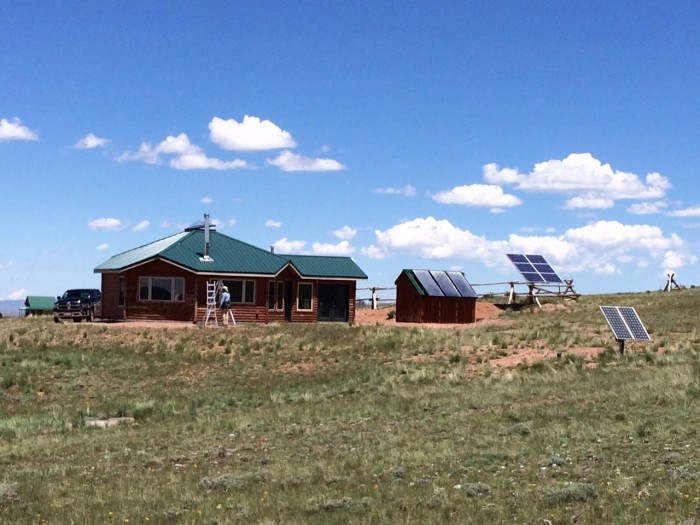
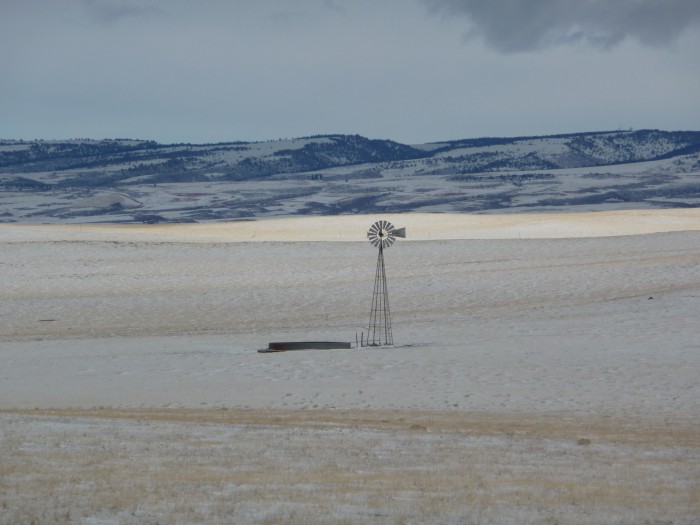
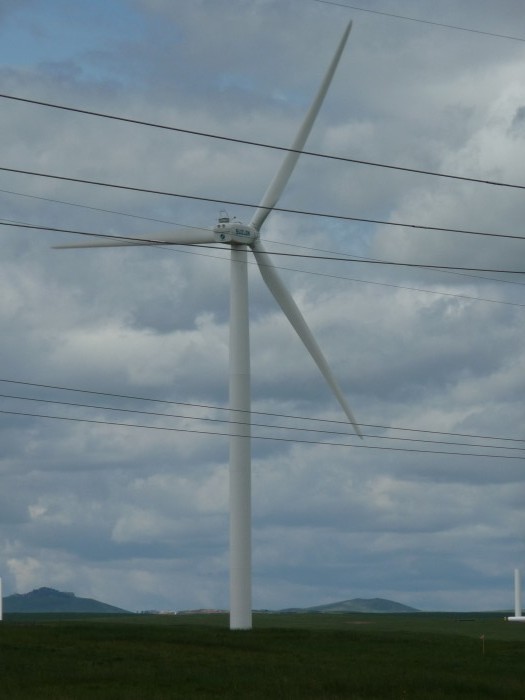
There are many, many ways forward, and we need as many of them as possible at this juncture. We need to have a bit more nuance in our understanding of energy resources with respect to their contexts, scales, histories, and so on: coal is not Coal, nor wind Wind. If anthropologists cannot grasp this notion, I don’t know who can! If we truly understand energy as a total social phenomenon, then we must consider the multiplicity of ways that it takes shape and gives life differently in all of our communities. My concern is simply not to write off or write large any single type of resource, whether renewable or fossil, but to understand the ways that the resource may be most productively used given the circumstances we face, in the particular site, at a particular scale. Scale matters, as does siting, and the kinds and numbers of other living things that are part of the energyscapes we have generated (Strauss et al. 2013).
Coal train outside of Lusk, Wyoming (2011). At the time this was taken, Wyoming coal was responsible for 40 percent of United States coal production and 5 percent of the global annual carbon emissions (and still not far off). However, most of that was not used in the state but rather exported on trains like this one: 100 cars per train, 100 trains per day—24/7.
The current energy mix is volatile, to say the least, and it is hard to predict exactly what it will look like in ten or fifteen years, but whether coal itself is still used in 2030, it is going to take an awful lot to get us (mostly) off all of the various fossil fuels any time soon. We have no replacement with the energy density, yet to move all of the sectors off the market very quickly and pretend that we can just wish it all away is as problematic as the folks who think that climate change will just suddenly cease to be a problem because someone will find the quick techno fix. All of this is magical thinking, none more righteous than the next. As we wend our way across the global Möbius strip that is the terrain of the AnthropoScene, riding the ontological wave as it twists and turns, we must be ever conscious of our simultaneous efforts to integrate with nature and destroy ourselves. We might then ask how to best deploy anthropology’s unique talent for changing the focal length of our mirror for humanity, zooming from the molecular to the global to make sense of our energy resources and technologies, as they are both drivers and solutions to the wicked crises we now inhabit.
Sarah Strauss is Professor of Anthropology at the University of Wyoming. Author of Positioning Yoga (2004) and editor of Weather, Climate, Culture (2003, with Ben Orlove) and Cultures of Energy (2013, with Stephanie Rupp and Thomas Love), her research focuses on energy, climate change, water, and health issues in India, Europe, and the United States.
All photos and videos in this post are credited to the author.
References
Appadurai, Arjun. 2013. The Future as Cultural Fact. London: Verso.
Bradbury, Ray. (1962) 2006. Something Wicked This Way Comes. New York: Harper Collins.
Cruikshank, Julie. 2005. How Glaciers Listen. Vancouver: University of British Columbia Press.
Gaonkar, Dilip, ed. 2001. Alternative Modernities. Durham, NC: Duke University Press.
Kirksey, S. Eben, and Stefan Helmreich. 2010. “The Emergence of Multispecies Ethnography.” Cultural Anthropology 25, no. 4: 545–576.
Latour, Bruno. 1993. We Have Never Been Modern. Trans. Catherine Porter. Cambridge, MA: Harvard University Press.
Mauss, Marcel. (1925) 1967. The Gift. New York: W.W. Norton & Company.
Mitchell, Timothy. 2011. Carbon Democracy. London: Verso.
Rittel, Horst, and Melvin Webber. 1973. “Dilemmas in a General Theory of Planning.” Policy Science 4: 155–169.
Shove, Elizabeth. 2003. Comfort, Cleanliness, and Convenience. Oxford: Berg Publishers.
Strauss, Sarah, Stephanie Rupp, and Thomas Love. 2013. Cultures of Energy: Power, Practices, Technologies. Walnut Creek, CA: Left Coast Press.
Vadén, Tere, and Antti Salminen. 2013. “Energy and the Experience of Modernity (Forum: Energy and Social Theory).” Suomen Antropologi 38, no. 3: 50–52.
Cite as: Strauss, Sarah. 2016. “‘Something Wicked This Way Comes’: Energy, Modernities, and the AnthropoScene.” EnviroSociety. 2 March. www.envirosociety.org/2016/03/
